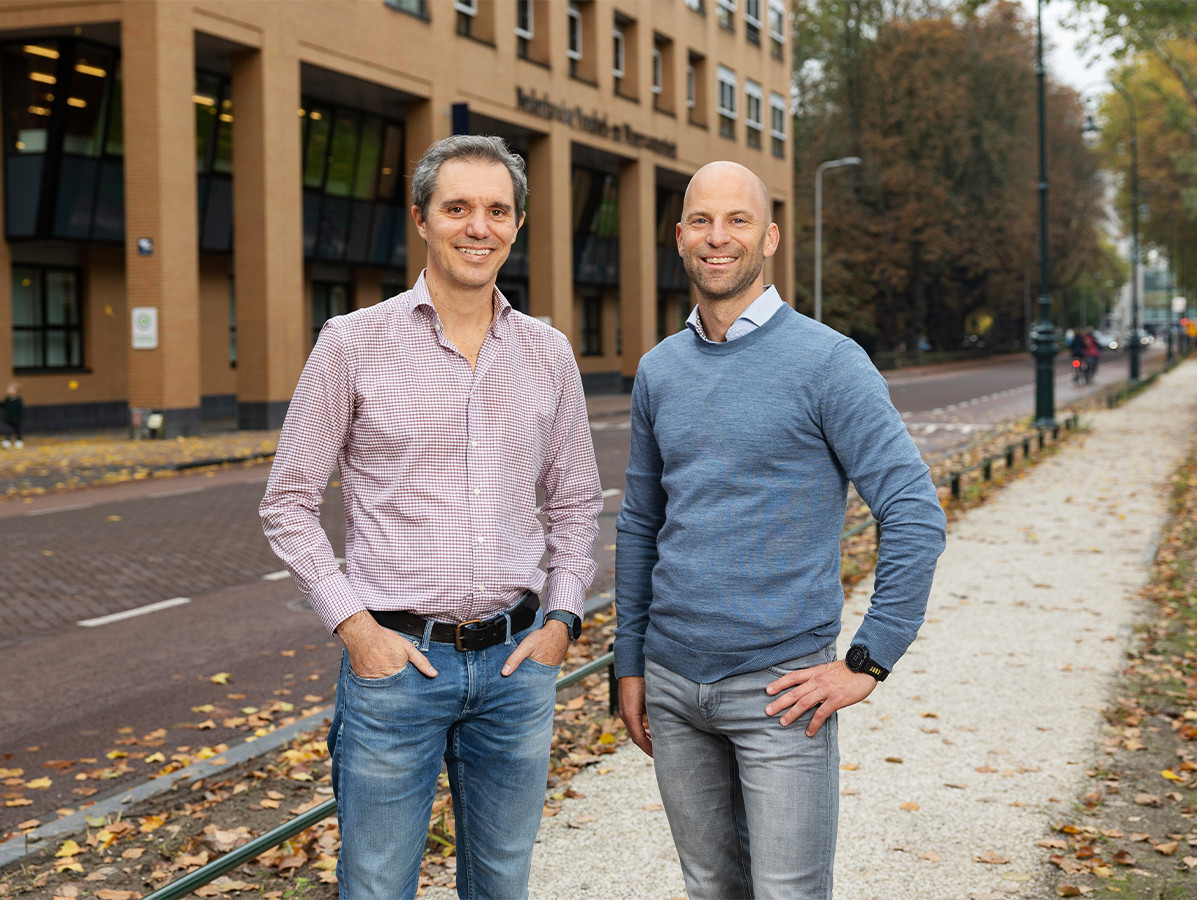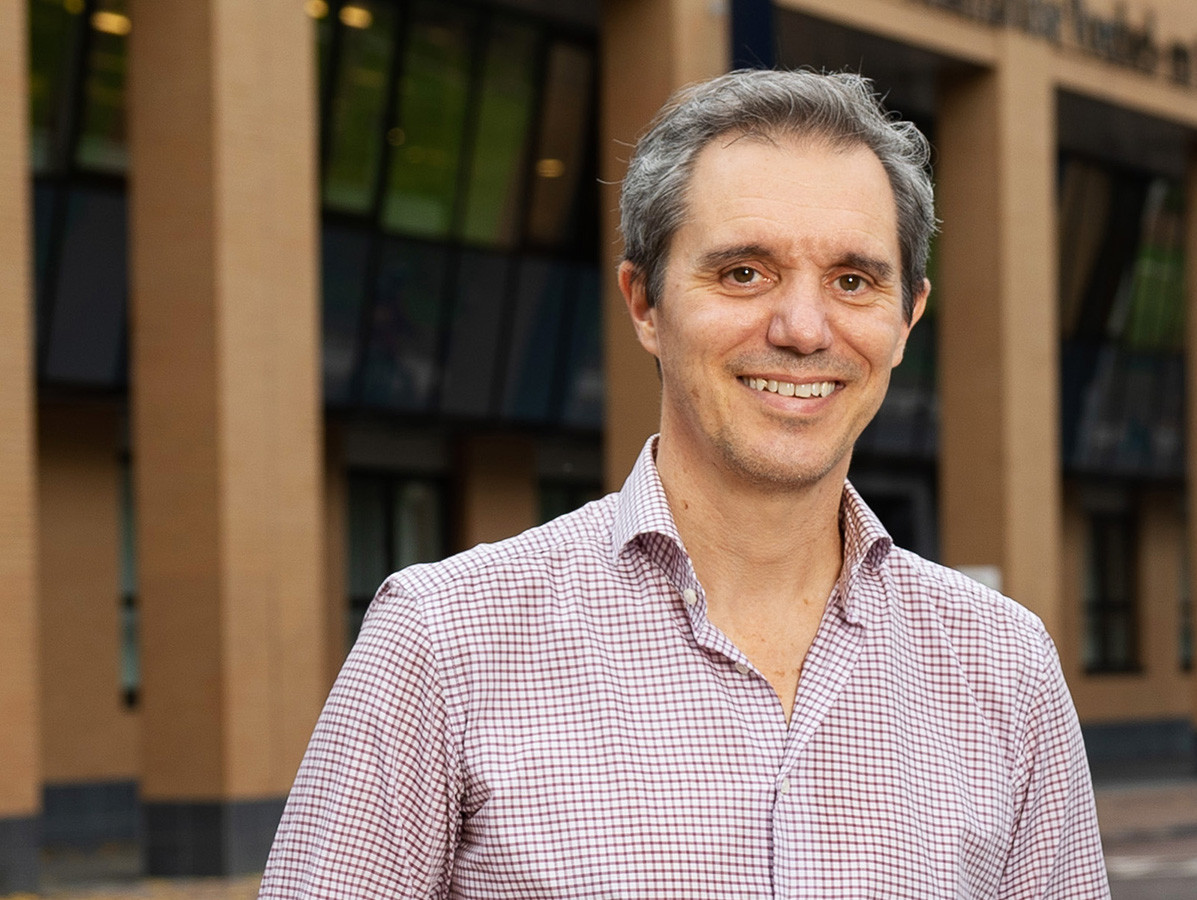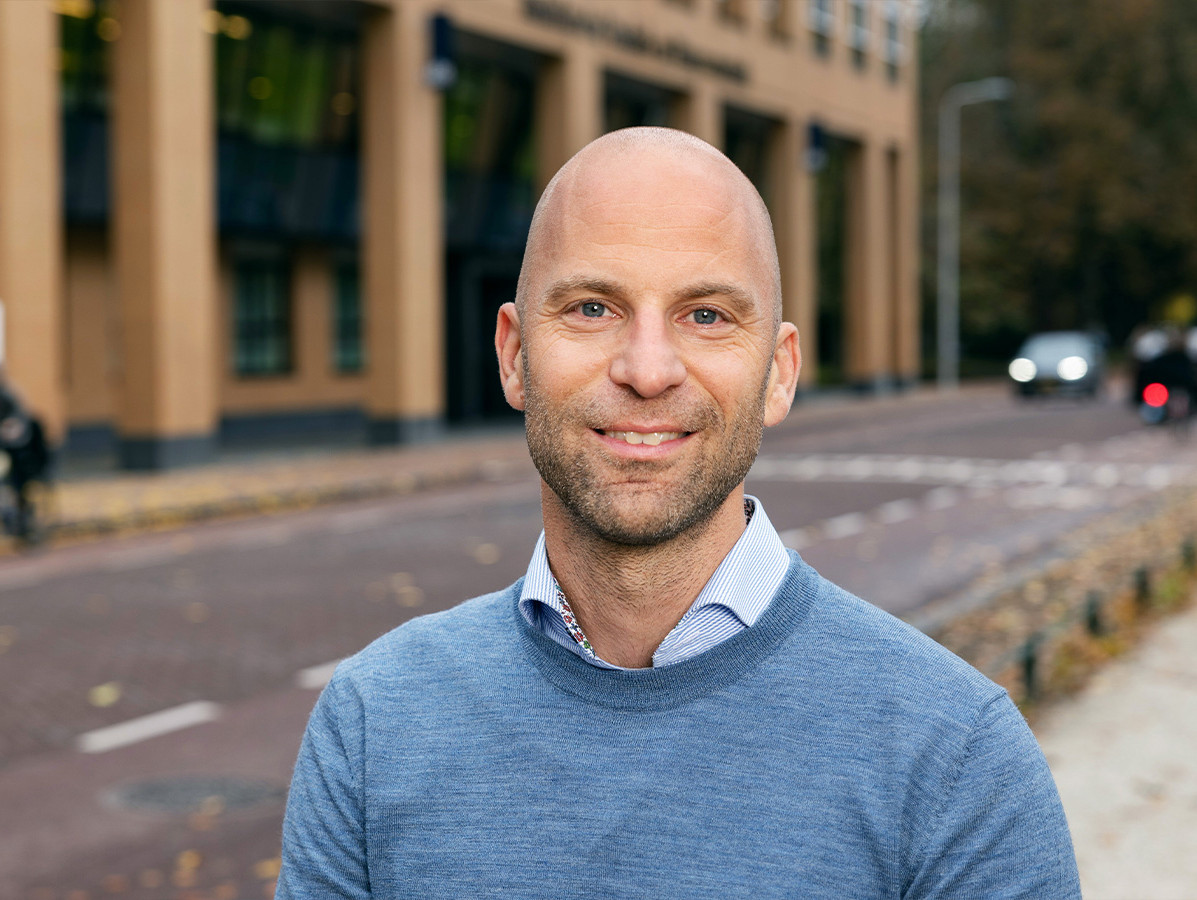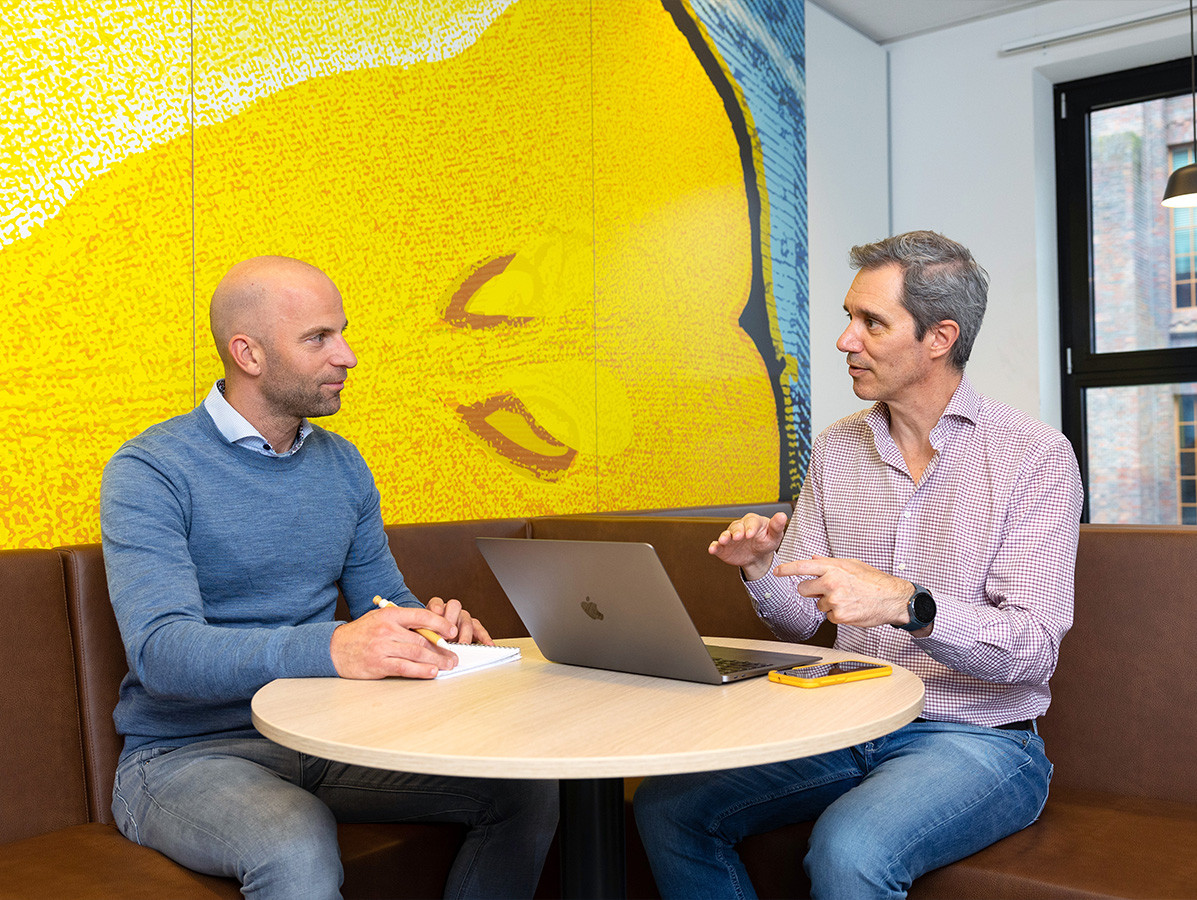
The Dutch Food and Consumer Product Safety Authority (NVWA) oversees - among other things - the production of safe food. Recent outbreaks and major changes in detection techniques are prompting more attention to machine design and cleaning. What does that mean in practice? We discuss it with two NVWA inspectors.
'Inspectors will pay more attention to hygiene, cleaning and disinfection during inspections'
It is a sunny Friday in October. In a bright meeting room at NVWA's headquarters in Utrecht, two NVWA inspectors have joined us for the interview: Coen van der Weijden, Coordinating Specialist Inspector/Microbiology, and Coen Graven, Coordinating Specialist Inspector/Toxicologist. This is certainly not the first time these two Coens are sitting together; even though they are responsible for two very different fields. Their cooperation, and that of other inspectors in yet other fields, is typical of the new direction the NVWA has taken. More about that later. Let's start at the beginning: food safety.
Van der Weijden: "Controlling microbiological safety is at the top of the list. A lot is therefore focused on hygienic production: on cleaning, disinfecting, washing hands, et cetera. In general, things are going very well, but hygiene remains an ongoing concern."
"Chemical safety is also very relevant and important," adds Graven. "Effects of chemicals are often not that visible, but can be risky in the longer term."
Van der Weijden: "Food companies are primarily responsible for food safety and applying relevant regulations, but the authorised authority can fill in some of the responsibility; for instance, risk communication. Among other things, the NVWA tests against the General Food Law, or the General Food Regulation (ALV). This is basically goal-oriented legislation: food put on the market must be safe. Derived legislation lists the hygiene requirements and procedures food producers must comply with. This is very explicit for a number of topics, in particular legal criteria such as the absence of Salmonella in measurable portions of 25 grams of product. We can inspect on these 'closed standards'. But there are also subjects that are less explicitly defined. These are what are known as 'open standards'. While these give a food manufacturer a high degree of flexibility, they also raise discussions. Because where exactly is the line between safe and unsafe food? And when is a device 'clean' or 'adequately' maintained? Closed standards especially have our attention: they are measurable. Slowly, more attention is also being paid to the more subjective issues."
Graven: "With food contact materials, the limits are very clear. These are 'closed standards' that a food contact material must meet. However, how one analyses that can sometimes generate discussions. The biocides legislation, for example, is crystal clear, you have to work with authorised agents. These agents are tested for effectiveness with firm requirements for germ count reduction."

Coen van der Weijden: 'We are not allowed to give advice, but we can demonstrate what is wrong'
Van der Weijden: "That is true, in part. A machine must comply with the Machinery Directive and have a CE mark, but that is not the result of food safety legislation, which is supervised by NVWA. Food safety legislation does not specify what must be done in practice to meet the open standards. A working group such as EHEDG has started working on the lack of clarity around hygienic design. However, what they recommend are not legal standards. Nor do I expect the directive to be implemented in law any time soon, at least there are no European trajectories in that direction. And we should not start imposing stricter standards on Dutch entrepreneurs than in the rest of Europe. As long as food producers have an approved relevant hygiene code or their own HACCP plan, apply it in practice and comply with the requirements around food contact materials, we cannot enforce the EHEDG guidelines."
Van der Weijden: "Yes, from recent outbreaks we concluded that our supervision of machinery and cleaning could be strengthened. We were able to detect those outbreaks thanks to a fairly new technique; 'whole genome sequencing', or WGS for short. This allows us to determine the dna of a listeria bacterium, for example. The method allows us to more quickly establish a link between the cases of disease reported by RIVM and sources in the food chain, i.e. the monitoring samples examined by Wageningen Food Safety Research. This technique is a real gamechanger. Listeria is difficult to detect. In recent years, thanks to WGS, we have finally managed to find the source of several outbreaks. We have to be very careful with this method, though. Think of it as a forensic investigation in a crime. You have to gather sufficient evidence first and that takes time. We don't want to unjustly impose drastic measures on a company. There is usually no question of guilt either; in most cases, a company does everything in good conscience, but sometimes things still go wrong."
Whole Genome Sequencing
Listeria outbreaks were reported sporadically until 2017. In 2017, WGS was introduced in national surveillance to replace pulse field gel electrophoresis (PFGE). Using the joint RIVM/WFSR database, outbreaks that can be linked to monitoring isolates from food companies have been detected regularly since 2019. Actions are then taken with the affected companies to prevent further contamination. (Source: Registration of foodborne outbreaks in the Netherlands, 2021 RIVM report 2022-0096I.H.M. Friesema et al.)
Van der Weijden: "Unfortunately, we do not have the luxury, time or money to carry out such an extensive investigation. Once we know what factory and production line(s) the contamination came from, production on those lines is stopped as quickly as possible to prevent worse. It is up to the entrepreneur to get his factory clean. What counts for the inspector is the fact that the food manufacturer controls it. So we usually don't find the primary source."

Coen Graven: 'I love seeing entrepreneurs grow'
Van der Weijden: "NVWA inspectors usually check during regular working hours. That is most effective, because then they see how work is done when the lines are operable. The disadvantage, however, is that this creates a blind spot. The inspector cannot see inside the machines at that time and cannot see how the cleaning is carried out, as it is usually done at night."
Graven: "Especially when using biocides for food processing, we would prefer to be next to it. Is the right product being used and is the product being used correctly, as described in the law? If things go wrong, it's often in the rinsing. That has to be checked, there are protocols for that; there should be no residues at the end of cleaning. Of course, we can assess the validation reports."
Van der Weijden: "What we discovered, partly thanks to WGS, is that companies themselves often do not realise that - and where exactly in the factory - things are going wrong. Inspectors also did not see any shortcomings during inspections. Yet in a number of cases, the cleaning did not turn out to be good enough, which could lead to major (listeria) problems. Partly in response to those outbreaks, we started a new training course for our inspectors, aimed at recognising cleaning issues. For food producers, this means that inspectors will pay more attention to hygiene, cleaning and disinfection during inspections. They can expect specific questions about this: 'How is cleaning carried out? Is cleaning validated? Are agents rotated to prevent resistance? Is the agent intended for food contact materials?'
Van der Weijden: "Unfortunately, that poses a threat to carrying out adequate nationwide surveillance for outbreak detection, because it means the bacteria are not getting into our hands alive, and thus RIVM does not obtain isolates for the necessary WGS analysis. We hope this does not continue. By the way, diagnostic labs use molecular diagnostics mainly for detecting STEC (Shiga-toxin-producing E.coli. ed.). Hopefully, we won't start seeing this back with Listeria or Salmonella."
Graven: "Producers need to realise that legislation changes over time. From 1 January 2023, for example, there will be a ban on the use of mineral oils on packaging and printed materials distributed to the public. A similar scenario is coming for PFAS. We do not know in what timeframe this will happen, but that there will be a comprehensive restriction is certain."
Graven: "A machine you bought 20 years ago may no longer comply with recent legislation as a result. It is therefore essential to always be up-to-date and keep in touch with your suppliers. You have to know which materials are used in your machines and whether they are still permitted. The Framework Regulation on Food Contact Materials EC 1935/2004 contains rules on the traceability of materials that come into direct contact with food. Producers are legally obliged to keep a record in a system of where their raw materials or products come from and to whom it was supplied. This ensures traceability in the event of a recall. This also applies to all parts and materials used in the machines. The responsibility lies with the food processing industry, they need to know whether all parts are safe."

Graven: "We have started to cooperate much more among ourselves! The cooperation between Coen van der Weijden and me is just one example of this, but it happens across the board. We sit together regularly to keep each other updated on recent developments."
Van der Weijden: "The NVWA is divided into domains that, until a few years ago, indeed operated fairly in isolation. We are now much more proactive in linking subjects across these domains. The training for new inspectors on cleaning and hygiene is a good example of this. Pest control, an essential aspect of hygiene and food safety, is also an important part."
Graven: "In addition, we will soon start a refresher course for inspectors in assessing food contact materials. The aim is to feed them with knowledge from all fields relevant to their work."
Van der Weijden: "We are testers of the law; there are clear limits to what we are allowed and able to do. The aim of NVWA inspections is to improve compliance. Consumers must be able to trust that the food they buy and eat is safe. Food manufacturers themselves are responsible for producing safe food; most of them handle that responsibility well. We are not an advisory body, but we can offer 'compliance assistance'. We do so, for instance, by providing insight into the gaps we identify. We are not allowed to give advice, but we can demonstrate what is wrong. And we can indicate where people can find information to remedy those errors."
"I love seeing entrepreneurs grow," says Graven. He opens a folder of photos showing how a space transformed from a simple garage workshop to a spotless high-tech production site. "This entrepreneur realised huge improvements in a few years, thanks in part to so-called 'feedback loops'. We inspect, indicate the gaps, on which a cycle of continuous improvement emerges. The drive for improvement is there and good quality managers pick this up of their own accord: not from an obligation from legislation, but because they want it themselves."
And that is where we should all be heading!
Photos: ©Herbert Wiggerman
Source: Vakblad Voedingsindustrie 2022